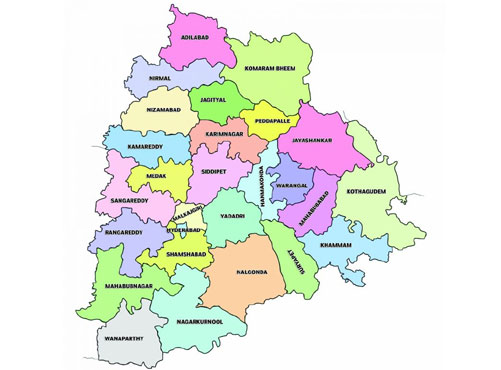Small is beautiful

The creation of 21 new districts in Telangana, taking the total number of districts to 31, marks a watershed in State administration. With the launch of the new districts on Dasara, Chief Minister K Chandrasekhar Rao has kept his 2014 poll promise to create new districts for administrative convenience and for providing welfare and developmental programmes to the people in an effective manner. It takes administration a tad closer to the people.
Originally, the Telangana Rashtra Samiti had promised creation of 14 new districts. After the party came to power, KCR initially agreed for issuance of notification for 17 new districts. Subsequently, yielding to protests, agitations and demands for new districts, four more were added. Along with districts, the mandals, revenue divisions and other administrative units have been reorganised. Complementing the reorganization of the districts, five new Police Commissionerates have been established -- Karimnagar, Ramagundam, Nizamabad, Siddipet and Khammam. This significant administrative measure comes two years after the State came into being. It is appropriate that Hyderabad has been left untouched.
The State government is set to also rationalize the staff pattern in the districts. "The basic idea is to take the administration closer to the last man. At the same time, we have initiated administrative reforms to rationalize departments and increase productivity of existing manpower. We are planning to have all department offices on the same premises so that people need not run around to get their grievances resolved. The whole process is set to transform the governance," says chief secretary Rajiv Sharma. The newly created mandals, police circles and sub-divisions are intended to improve the delivery of services to the common man.
The reorganisation involves a huge capital and recurring expenditure for the State. It is estimated that Rs 20,000 crore would be required just to create infrastructure in the new districts, including offices and residences for collectors, SPs, junior officers, guest houses. Over 12,000 posts need to be filled. The Police Department will need the maximum invest- ment as 92 new police stations are being built. Around 1,800 new posts will be created. All said and done, the central pool of IAS and IPS does not have as many officers as are required for the districts now. So, Telangana will perforce dip into the State cadre to fill posts. The plan now is to appoint junior officers as district SPs as the area of jurisdiction is smaller. Politically speaking, the whole exercise will help build second rung of leaders at the district level. With regard to administration, KCR’s credo is: 'small is better'. Except for Hyderabad, all districts have been divided into two, three or even four districts. The State is designed to bring the administration geogra- phically closer to the people. The district magistrate or collector won't be the lone powerful official presi -ding over the destiny of lakhs of people in a district.
The KCR government is hopeful that the redrawn map of Telangana would influence the Union government to increase the number of assembly constituencies from 119 to 153. This will be a political masterstroke, considering TRS has admitted several MLAs and other leaders from the Telugu Desam and Congress and KCR needs to find assembly seats for all of them to avoid infighting in the 2019 assembly elections.
-
Related News
-
More from Metro India

